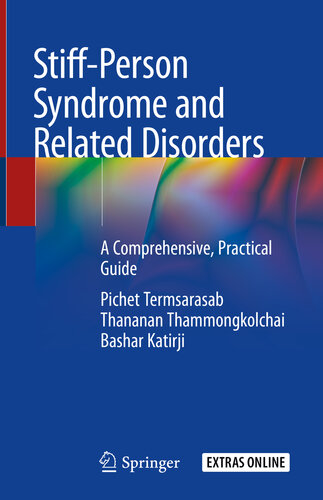Stiff-Person Syndrome and Related Disorders: A Comprehensive, Practical Guide 2020
دانلود کتاب پزشکی سندرم فرد سفت و اختلالات مرتبط: راهنمای عملی جامع
| نویسنده |
Bashar Katirji, Pichet Termsarasab, Thananan Thammongkolchai |
|---|
| تعداد صفحهها |
183 |
|---|---|
| نوع فایل |
epub |
| حجم |
16 Mb |
| سال انتشار |
2020 |
89,000 تومان
این عنوان جامع همه جنبههای گسترده اختلالات طیف SPSD را پوشش میدهد، از ویژگیهای بالینی و تحقیقات آزمایشگاهی گرفته تا نقشهای علمی بنیادی نوروایمونولوژی و ژنتیک که به پزشکان کمک میکند تا پاتوژنز این اختلال را درک کنند.
این کتاب کاربردی که در 15 فصل سازماندهی شده است، با شرحی جامع از تاریخچه بالینی و پدیده های SPSD آغاز می شود. فصلهای بعدی سپس به تشخیصهای افتراقی این اختلال و همچنین الکتروفیزیولوژی، ایمونوپاتوژنز و نوروشیمی میپردازند. این با تجزیه و تحلیل هر زیرگروه SPSD از جمله سندرم فرد سفت و سخت کلاسیک و انواع آن، ارتباط بین فنوتیپ های بالینی و آنتی بادی ها، و همچنین SPSD در جمعیت کودکان دنبال می شود. در نهایت، این کتاب با بررسی رویکردهای مختلف تشخیصی SPSD، درمانها و موارد اضطراری بالقوه که در عمل بالینی دیده میشود، به پایان میرسد. سندرم فرد سفت و اختلالات مرتبط که توسط یک نویسنده مشهور چند رشته ای ایجاد شده است، کمکی ضروری به ادبیات بالینی است و برای پزشکان و محققان علوم پایه بسیار مورد توجه قرار خواهد گرفت. .
This comprehensive title covers all of the broad aspects of stiff-person spectrum disorders (SPSD), ranging from clinical features and laboratory investigations to the basic scientific roles of neuroimmunology and genetics that aid clinicians in understanding the pathogenesis of this disorder.
Organized across 15 chapters, this highly practical book begins with a thorough account of the history and clinical phenomenology of SPSD. Subsequent chapters then delve into the differential diagnoses of the disorder, as well as its electrophysiology, immunopathogenesis, and neurochemistry. Following this is an analysis of each subtype of SPSD including classic stiff-person syndrome and its variants, correlations between clinical phenotypes and antibodies, as well as SPSD in the pediatric population. Finally, the book concludes with an examination of the various SPSD diagnostic approaches, treatments, and potential emergencies seen in clinical practice.
Developed by a renowned multidisciplinary authorship, Stiff-Person Syndrome and Related Disorders is an indispensable contribution to the clinical literature and will be of great interest to both clinicians and basic science researchers.




